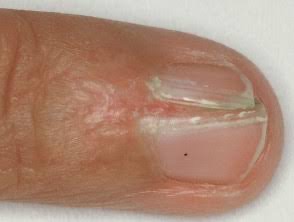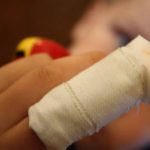Nails play a more crucial role in our daily lives than we might realize. Beyond their aesthetic appeal, nails provide protection to our fingertips and assist in various tasks. When a nail injury occurs, it can have a ripple effect on both our physical and emotional well-being. In this article, we will explore the effects of nail injuries, their potential complications, and tips for effective recovery.
The Immediate Impact:
1. Pain and Discomfort:
Nail injuries often come with immediate pain and discomfort. Whether it’s a bruised nail, a tear, or a complete nail avulsion, the initial sensation can range from mild discomfort to acute pain.
2. Impaired Functionality:
Our hands are essential tools in daily activities, and nail injuries can temporarily impair their functionality. Simple tasks, like typing, grasping objects, or buttoning clothes, may become challenging.

Potential Complications:
1. Infection Risk:
Open wounds or cuts around the nails can create an entry point for bacteria and fungi, increasing the risk of infection. Proper wound care is crucial to minimize this risk.
2. Changes in Nail Growth:
Severe nail injuries might lead to changes in the way nails grow. Irregularities, such as ridges, grooves, or deformities, can occur during the recovery process.

3. Psychological Impact:
Nail injuries can have psychological effects, especially if they result in visible changes to the nails. Individuals may experience self-consciousness or a temporary blow to self-esteem.

Effective Recovery Strategies:
1. Proper Wound Care:
Clean the injured area gently with mild soap and water. Applying an antibiotic ointment and keeping the wound covered with a sterile bandage can aid in preventing infections.
2. Protecting the Injured Nail:
For injuries like a bruised or torn nail, protecting the affected nail with a bandage or a protective covering can prevent further damage and support the healing process.

3. Pain Management:
Over-the-counter pain relievers can help manage pain and discomfort associated with nail injuries. Follow the recommended dosage guidelines and consult with a healthcare professional if necessary.

4. Maintaining Nail Hygiene:
Proper nail hygiene is essential during the recovery phase. Trim nails carefully, keeping them clean and avoiding activities that may further stress the injured area.

5. Seeking Professional Care:
In cases of severe nail injuries, or if complications arise, seeking professional medical care is crucial. A healthcare provider can assess the extent of the injury and recommend appropriate treatment.

While the injuries can be inconvenient and painful, they are often manageable with proper care and attention. By understanding the potential effects of nail injuries and adopting effective recovery strategies, individuals can navigate the healing process more efficiently. If you experience a severe nail injury or notice persistent complications, consulting with a healthcare professional ensures comprehensive care and promotes a smoother recovery journey.
Read more articles here…